Do you have a question about the Samsung LN-R237W and is the answer not in the manual?
Lists the TV's key features and technologies like DNIe, Mi Ctrl de Color, etc.
Lists the components included with the TV and their part numbers.
Details the TV's physical overview, including front panel buttons and their functions.
Explains the various input/output connectors on the back of the TV.
Explains the functions of each button on the remote control.
Provides step-by-step instructions for inserting batteries into the remote.
Offers troubleshooting tips for a non-functional remote control.
Guides on connecting VHF and UHF antennas, specifically 300-ohm flat cable types.
Instructions for connecting 75-ohm round cable antennas.
How to connect two separate VHF and UHF antennas using a combiner.
Instructions for connecting cable TV, with and without a decoder.
Guides on connecting a standard VCR.
Instructions for connecting an S-VHS VCR for better quality.
Steps to connect a DVD player using component or audio cables.
How to connect a digital TV receiver via component or audio.
Connecting a home theater system audio output.
Connecting external devices via DVI to HDMI.
Connecting devices via HDMI for digital audio and video.
How to connect a PC using video and audio cables.
Instructions on turning the TV on and off using the remote or panel.
How to change TV channels using different methods.
How to adjust the TV's volume level.
How to mute and unmute the TV sound.
Shows current channel and audio-video settings.
How to navigate and use the TV's on-screen menus.
Initial setup process for the TV.
How to select video signal source and memorize channels.
Steps for automatic channel scanning and storage.
Manual process to add or delete channels.
How to select the input source for the TV.
Customizing input source names for easier selection.
Explains the preset automatic picture modes (Dynamic, Normal, etc.).
How to manually adjust picture settings like contrast, brightness, etc.
How to adjust the screen's color temperature (warmth/coolness).
Adjusting aspect ratios like 16:9, 4:3, Zoom.
Detailed instructions on using the zoom feature for screen size.
How to freeze the current image on screen.
Using digital noise reduction for weak signals.
Explains Samsung's DNIe image enhancement technology.
Allows users to adjust specific color preferences (Rosa, Azul, Verde).
Fine-tuning picture details like sharpness and color.
Dynamic contrast adjustment for optimal contrast.
Automatic brightness adjustment based on ambient light.
Explains how to display multiple video sources simultaneously.
Choosing external sources for the PIP window.
Swapping main and PIP screen content.
Changing the channel displayed in the PIP window.
Adjusting the size of the PIP window.
Changing the location of the PIP window on screen.
Table showing PIP compatibility between sources.
Explains preset automatic sound modes (Normal, Music, etc.).
How to manually adjust sound settings like equalizer.
Details on activating and configuring SRS TruSurround XT for simulated surround.
Selecting audio tracks like Stereo, Mono, or SAP.
Reduces volume differences between channels.
Muting the internal TV speakers.
Choosing audio source for main or PIP screen.
Fine-tuning channel tuning for optimal reception.
Guides on connecting and using the TV as a PC monitor.
Using auto-adjustment for optimal PC display settings.
Adjusting screen quality to reduce noise and improve clarity.
Adjusting the horizontal and vertical position of the PC display.
Resetting screen position or color settings for PC mode.
Setting the TV's internal clock.
Setting the TV to turn off automatically after a set time.
Instructions for activating/deactivating timers like 'Temp.enc.'
Changing the on-screen menu language.
Setting up the V-Chip parental control system and PIN.
Setting program restrictions based on age ratings (TV-Y, TV-PG, etc.).
Applying MPAA film rating restrictions for content control.
Emergency procedure to bypass V-Chip lockout.
Enabling or disabling the V-Chip parental control.
Setting parental controls for English Canadian content ratings.
Setting parental controls for French Canadian content ratings.
How to enable and display closed captions (subtitles).
Activating a blue screen when no signal is present.
Setting the turn-on/turn-off melody sound.
Common problems and their possible solutions.
Step-by-step guide for attaching the TV stand.
Instructions for removing the TV stand.
How to install the wall mount kit for specific TV models.
How to use a Kensington lock for security.
Considerations for using the TV in different countries due to broadcast systems.
Technical specifications for different TV models, including dimensions and audio features.
Information on supported display modes and resolutions.
| Screen Size | 23 inches |
|---|---|
| Display Type | LCD |
| Resolution | 1366 x 768 |
| Aspect Ratio | 16:9 |
| Contrast Ratio | 800:1 |
| Brightness | 500 cd/m² |
| Response Time | 8 ms |
| Inputs | HDMI, Component, Composite |


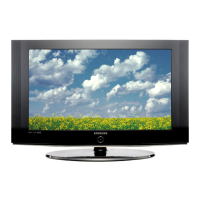
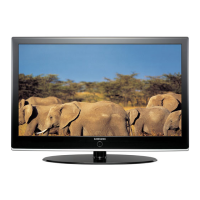
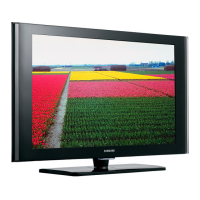


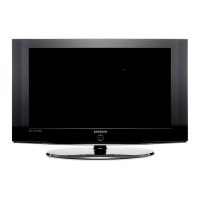
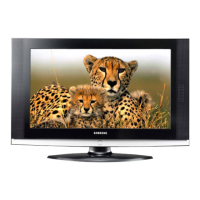


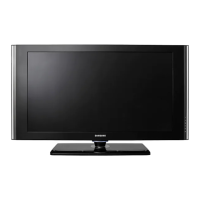
